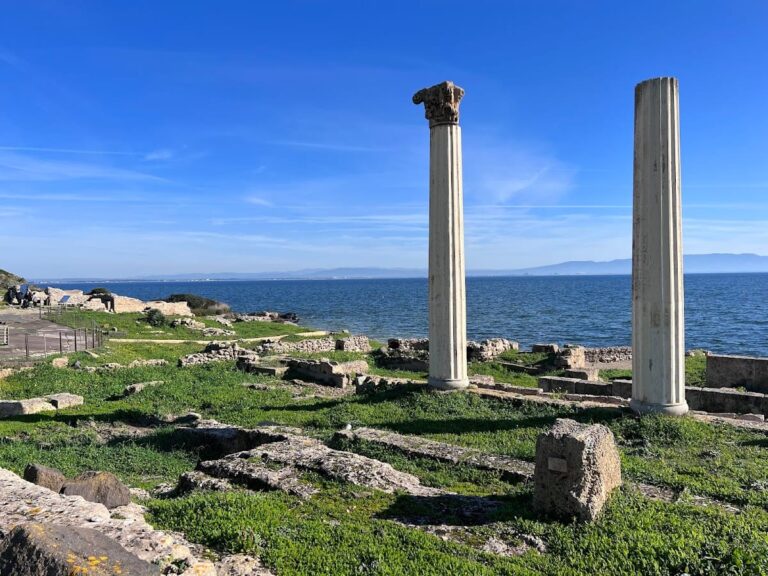Temple of Antas: A Historical Sanctuary in Sardinia
Visitor Information
Google Rating: 4.6
Popularity: Medium
Google Maps: View on Google Maps
Official Website: www.startuno.it
Country: Italy
Civilization: Phoenician, Roman
Remains: Religious
History
The Temple of Antas is located near Fluminimaggiore in Sardinia, Italy, within an area historically inhabited by Carthaginians and Romans. The site was chosen for its proximity to valuable lead and iron deposits, attracting these ancient civilizations. The sanctuary is dedicated to Sardus Pater Babai, a local Sardinian deity also known as Sid Addir by the Carthaginians.
The earliest phase of the site dates back to around 500 BCE, when a Punic temple was constructed over a sacred limestone outcrop. This temple replaced an earlier Nuragic cult site connected to water and vegetation, reflecting a continuity of religious practices in the region. The Punic temple underwent renovation around 300 BCE, maintaining its role as a center of worship during Carthaginian influence.
Around 38 BCE, during the reign of Emperor Augustus, the Romans built a new temple on the site, incorporating and expanding the earlier Punic structure. This Roman temple was later restored between 213 and 217 CE under Emperor Caracalla. A Latin inscription on the temple’s epistyle records that Quinto Celio (or Cocceio) Proculo supervised this restoration, confirming the temple’s continued religious importance in the Roman period.
The site also reveals evidence of a Nuragic village dating from approximately 1200 to 900 BCE, which was reused during the late Roman era. Nearby, a Nuragic necropolis with tombs from the early Iron Age was discovered, including a bronze figurine that may represent the earliest known image of Sardus Pater Babai. Late Roman burials near the village include a tomb with a silver and tin ring inscribed in Latin, dedicating coins to the deity Sid Babi, showing the persistence of local religious traditions.
The temple was rediscovered in 1838 by General Alberto La Marmora, who initiated archaeological surveys and recovered important inscriptions. The current appearance of the temple results from a reconstruction carried out in 1967, preserving its historical layers.
Remains
The Temple of Antas complex includes a Roman temple built over an earlier Punic sanctuary, a Nuragic village, a necropolis, Roman quarries, and an ancient path linked to water cult practices. The Roman temple measures about 20 meters long and is divided into three main parts: a pronaos (front porch), a cella (inner chamber), and an adyton (a restricted area likely used for purification rituals).
The pronaos features six smooth limestone columns approximately eight meters tall, with Ionic capitals and Attic bases. It originally had a triangular pediment. The cella, accessible only to priests, contains pilasters attached to the walls and retains a mosaic floor. Behind the cella, the bipartite adyton is reached by three steps and was waterproofed with a special mortar called cocciopesto, suggesting it held water for ritual cleansing.
Beneath the Roman temple’s access staircase lies the Punic temple, built around a sacred limestone outcrop used as an altar. Burnt bone remains confirm its ritual use. Numerous Punic artifacts were found near this altar, including sculpture fragments, inscriptions, gold objects, Egyptian-style amulets, and about 200 bronze coins from Sicilian, Sardinian, and Carthaginian mints.
Outside the temple, a staircase leads to the podium, with one step dedicated to the altar, which was located outside the main building in accordance with ancient customs. A statue of Sardus Pater Babai, estimated to have been about three meters tall based on a recovered finger, likely stood inside the temple.
Two square basins about one meter deep were found in the sacred area, used to hold water for purification rites. The pronaos floor suffered damage from illicit excavations but has been partially restored. Numerous votive offerings were recovered, including bronze statuettes, iron spears, Republican and Imperial coins, and a bronze tablet with a dedication to Sardus Pater, providing valuable insight into the cult practiced at Antas.
The Nuragic village nearby consists of circular stone buildings cemented with earth mortar. Archaeological evidence shows glass and lead working took place there. Late Roman reuse of the village is indicated by four box tombs near its enclosing wall, including one burial with a silver and tin ring inscribed in Latin, dedicating 94 denarii to Sid Babi.
The Nuragic necropolis, located about 21 meters north of the Roman temple podium, contains three small tombs from the early Iron Age. These include a cenotaph (a monument to the dead) and two seated burials, one accompanied by a bronze figurine that may be the earliest depiction of Sardus Pater Babai. The site also includes Roman quarries used to extract limestone blocks for construction.
Together, these remains illustrate a long history of religious and cultural activity at Antas, spanning from the Nuragic period through Punic and Roman times.










